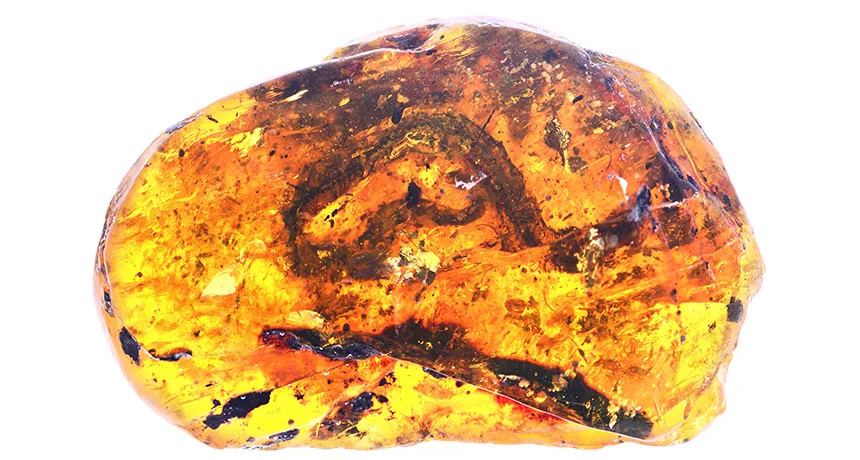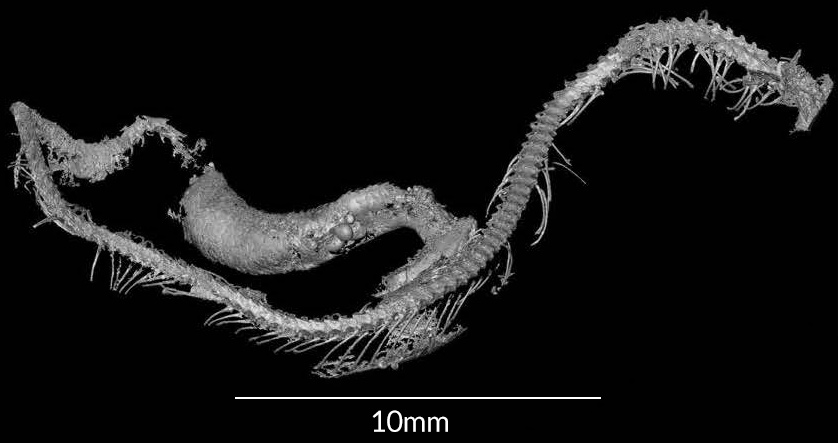This amber nugget from Myanmar holds the first known baby snake fossil
The delicate skeleton dates to about 99 million years ago

SNAKE SURPRISE A walnut-sized nugget of amber contains the first known example of a fossilized baby snake.
Ming Bai/Chinese Academy of Sciences








